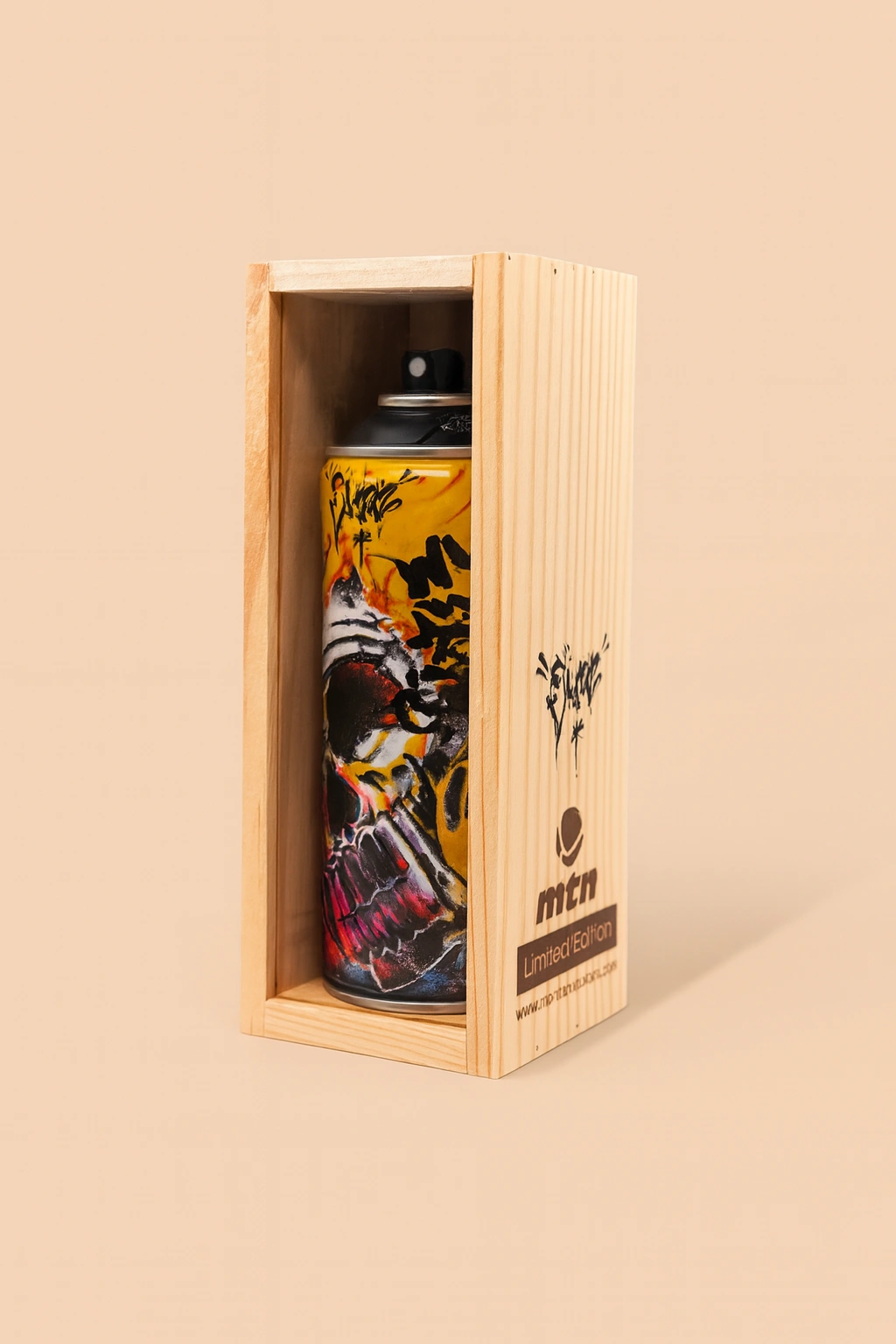Born in 1984 in Nagano, Japan, Hikari Shimoda studied illustration at the Kyoto Saga University of Art and later refined her visual language at Aoyama Juku School. Her early grounding in manga and anime culture—especially the magical girl genre and superheroes of all kinds—formed the ideological basis for her work.
Unlike many artists associated with kawaii (cute) or otaku culture, Shimoda is not seduced by aesthetic alone. Her characters aren’t empty-eyed dolls or merchandise-ready avatars; they are loaded with existential weight. Her children are protectors, witnesses, victims, and prophets. They’re heartbreakingly beautiful and disturbingly wise—otherworldly in their stillness, and deeply human in their pain.
The Figure in Lonely Hero (Copper): Visual Anatomy of the Hero-Child
Lonely Hero (Copper) depicts a solitary child, costumed in a style evocative of Western comic book heroes and Japanese sentai warriors, blending familiar tropes like capes, boots, and emblems into a stylized whole. Yet the material—copper—imbues this otherwise ephemeral subject with durability and gravitas.
The child’s eyes, disproportionately large and etched with stars, dominate the face. This is classic Shimoda: the ocular window not just to the soul, but to entire worlds. The eyes do not shimmer with wonder, but with the kind of melancholy usually reserved for ghosts. This “hero” is no triumphant savior; they are burdened, perhaps broken, caught in the act of waiting—either for instruction or for the end.
The contradiction is immediate and painful: a child cast in bronze, fixed forever in a role they did not choose. Heroism, here, becomes an inherited task rather than a chosen destiny.
Material and Meaning: The Poetics of Copper
Why copper?
Traditionally used in monuments, coins, and architectural ornamentation, copper implies preservation, status, and reverence. It’s also a metal that weathers—oxidizes into green over time—suggesting that even permanence changes. In Lonely Hero, copper turns a private emotional symbol into a public artifact. The child becomes both idol and ruin.
There is also symbolic irony in the transformation of Shimoda’s usual mediums—canvas, pastel, watercolor—into sculpture. The shift implies an intensification. What was once illustrated, imagined, or ephemeral is now heavy, cold, unignorable. It commands space and breath. This is not a drawing to pass by, but an entity to confront.
Superheroes and Magical Girls: Fantasy as Psychological Architecture
Shimoda’s art leans heavily on Japanese mahou shoujo (magical girl) archetypes and Western superhero lore. These genres are, at their heart, narratives about transformation—ordinary youths becoming extraordinary, usually at great emotional cost. In series like Sailor Moon, Cardcaptor Sakura, or even Neon Genesis Evangelion, the child must protect the world even when they are not ready to carry its weight.
Shimoda’s heroes reflect this burden. They wear costumes not for glamour but because society demands it. They are living symbols of adult expectations projected onto the unready.
The “lonely hero” isn’t fighting crime. They’re fighting silence, absence, and confusion. They may be divine, but they are also profoundly alone.
Themes of Death, Rebirth, and Societal Collapse
Shimoda’s world is one of tension: between childhood and adulthood, fantasy and despair, hope and disillusionment. The thematic dualities of Lonely Hero (Copper) echo this liminality. The figure appears suspended in time, fixed between a past that has failed and a future that refuses to arrive.
There is apocalypse in Shimoda’s palette—even when it’s pastel. There is collapse in her characters—even when they’re dressed to save us. In interviews, Shimoda has remarked on how her characters live “in a world that is yet to be reborn.” This is a potent phrasing, suggesting not only ruin, but the possibility of something else.
If death is here, so too is the chance for metamorphosis.
The Eyes Have It: Individual and Collective Identity
No element of Shimoda’s aesthetic is as iconic or narratively rich as the eyes of her figures. Star-filled, wide, often glistening with implied tears, they serve multiple functions: as emotional barometers, cosmological symbols, and societal mirrors.
Shimoda has said: “They are anyone who just exists.” Her children are not specific individuals, but archetypes—stand-ins for countless voiceless souls. The hero is us, and we are the hero. But it is a tragic inheritance: to bear witness, to absorb, to reflect.
It is not a stretch to read her figures as avatars of climate anxiety, technological alienation, or emotional abandonment. They reflect not only her private fears, but the unspoken dread of a generation.
Literary Echoes: Children as Messiahs in Dystopian Fiction
Shimoda’s hero children stand in a long literary lineage. Think of William Golding’s Lord of the Flies, where innocence mutates into chaos. Or Ender’s Game, where the fate of civilization is handed to a genius boy manipulated by military adults. More closely still, consider Never Let Me Go by Kazuo Ishiguro—a tale of children raised for utilitarian sacrifice in a world lacking empathy.
Her sculptures bring this tradition into material form. The child is not only a symbol of the future, but a warning to the present. In the child’s gaze is judgment, in their stillness is potential action.
The Psychological Gaze: Art as Emotional Mirror
Shimoda’s work resonates because it implicates the viewer. In looking at Lonely Hero (Copper), we are made aware of our own projection. Is this figure noble or broken? Strong or traumatized? A hero—or simply a child forced to character one?
The sculpture becomes a psychological mirror, inviting contemplation not just of “what this means,” but of how we feel in its presence. It opens a quiet internal conversation about protection, vulnerability, and the unbearable tenderness of children surviving in the adult world.
Reception and Critical Legacy
While Shimoda’s rise has been relatively quiet outside of Japan, her cult following in the international art world is growing. Her solo exhibitions in New York, Hong Kong, and Paris have drawn acclaim, and her sculptures mark an exciting expansion of her visual language.
Lonely Hero (Copper) has particularly resonated with collectors and critics for its confrontation of permanence and precarity. It’s a natural extension of her painting work, but one that intensifies its emotional and spatial presence.
It’s not a piece you hang—it’s one that haunts a room.
Impression
In a time saturated with recycled nostalgia, empty spectacle, and aesthetic posturing, Hikari Shimoda’s Lonely Hero (Copper) offers something rare: a new mythology. It invites us to reimagine the figure of the hero not as flawless, victorious, or loud—but as silent, unsure, and alone.
This is not cynicism. It’s tenderness. It’s an acknowledgment of the cost of survival and the holiness of children in a collapsing world. Her hero does not promise salvation. They promise honesty.
And that, perhaps, is more heroic than anything else.
No comments yet.








